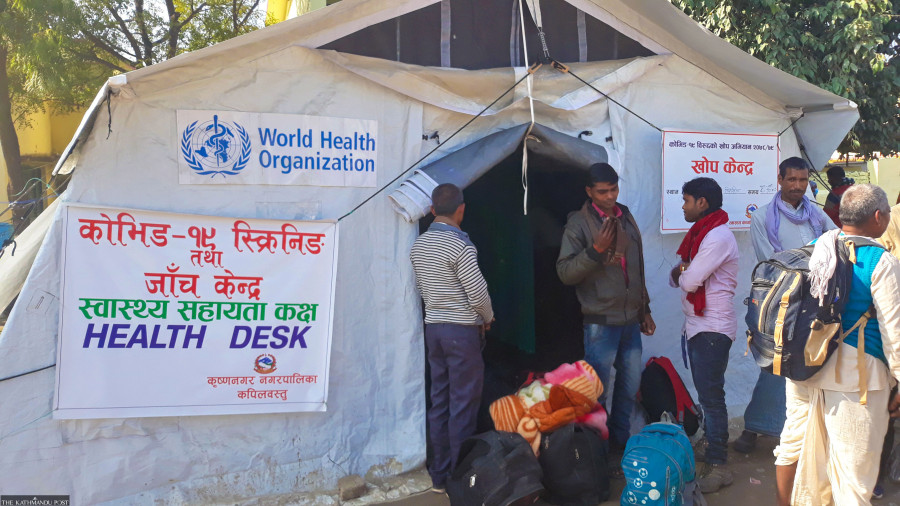Editorial
Migrants return
The reverse movement of migrants can be perceived either as a problem or an opportunity by the authorities.
For the past two years, the surge and wane of the virus have become an inseparable part of our lives, and every surge and wane results in the mass movement of people across the border with India. The dominant variant of concern is now the Omicron which is wreaking havoc worldwide. Despite concerns raised repeatedly by the experts and the media, little was done concerning increasing the number of testing or the eagerness shown to vaccinate the masses. Instead, just like previous occasions, it wasn’t until the authorities sprung to action at the last moment.
Those who left Nepal to seek employment, mainly in India a few months ago after the decline in cases, have now started the journey back to Nepal. Every increase in Covid-19 cases results in some closure that affects the migrant workers. During the first wave, the immigrants that returned to Nepal were citing hardships due to extreme measures taken by the authorities, and it was also the fear of the unknown then. No one knew what or how long the lockdown would last.
Those returning now are again citing loss of employment, but the fear of the virus has somewhat dwindled. It could partly be due to the availability of vaccines in general or because the burden of financial loss has been so overwhelming these last two years, people have dominated the fear factor completely. This reverse movement can be perceived either as a problem by the government of Nepal or an opportunity. Suppose the authorities, who are so reliant on running the nation on foreign exchange earned through remittances, see the returning of youths as a loss of remittance income. In that case, we can categorically state that the government is clueless about other necessary ways the economy could be strengthened.
Why isn’t the government serious about retaining the youth for Nepal’s development? Over the last two decades, all that experience acquired by migrant workers could easily be put to practical use in various sectors. But investment in industries has been negligible. It seems that politicians have no time dedicated to development purposes. Elections would be battled on economic issues rather than constant political rhetoric if they did. A development model would consist of more than just raising revenue through import duty and remittances.
But alas, as the third wave strikes Nepal, people are now scrambling to get vaccinated instead of finding a robust system of tackling the virus. With many not even able to get their first jab, the government has announced for front line workers and those above 60 years who have completed six months from receiving their second dose to be administered their third jab. Proroguing of parliament hasn’t stopped the authorities from collecting their pay, but the new wave is undoubtedly looking to put many people out of work again. Only if there was an economic model to the citizens back to work and stem the exodus of youth.




 15.12°C Kathmandu
15.12°C Kathmandu














